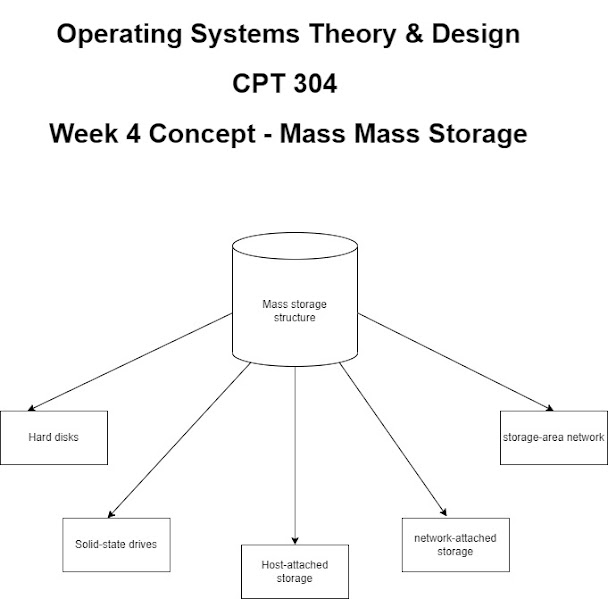Week 4 - Files, mass storage, and I/O
Outline the objectives and functions of file systems management and the supported operations, including their reliability and performance.
The objectives and functions of file system management are to ensure proper organization within the computer’s files system. There are many responsibilities that come with file system management some of which are to create new files, manage existing files, organize various folders, and read many different file types, all while allowing the user full control to create, edit, rename, and delete files at will. These files can be stored on many different devices such as a local hard disk, a removable drive, or on a shared location. In the event of multiple user access, there is also the idea of access control which controls who can access the file and what type of access is required. Many other requirements with file manipulation are the name, identifier, type, location, size, protection, time, date, and user I.D. of each file. There is also the concept of reliability so that those directories and files can always be accessed. In a shared environment, it’s best to have a scheduled backup of the files and directories in the chance of hardware failure which creates a high level of reliability. With this, it is crucial to consider file size so that proper backup storage can be allocated. Taking all these items into consideration with the file system management will ensure higher performance for the user that is accessing the files and directories.
Describe different types of input/output devices, distinguishing between the hardware and software layers and summarizing the integration across I/O and memory components.
There are many different types of input/output devices these days, but when it comes to basic computer needs, there are typically only a few components that are required for a functional system. Most computer systems will require input devices such as a keyboard, mouse, and sometimes a scanner, but nowadays components such as a stylus pen, a camera, or even our own hands on a touchscreen can be used as an input device.
As for output devices, the list isn’t as long as the input devices. The typical requirements of a computer system’s output devices are items such as a monitor, printer, or speaker, but items such as a projector can also be used as an output device. These items are the hardware of the input/output devices and connect through either a serial, USB, or video port.
The software portion of input/output devices are the drivers that are required to allow the hardware to work properly. This is how the computer recognizes the device and allows communication between the two components. For this to happen, the processor must send commands to a port controller, so these hardware components are recognized. According to the textbook, “The processor communicates with the controller by reading and writing bit patterns in these registers. One way in which this communication can occur is through the use of special I/O instructions that specify the transfer of a byte or word to an I/O port address" (Silberschatz, A., Galvin, P. B., & Gagne, G., 2014). These instructions are then written to memory which is also known as memory-mapped I/O which allows an I/O device to access a location in memory.





Comments
Post a Comment